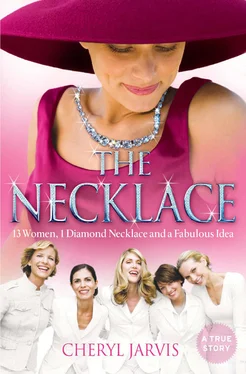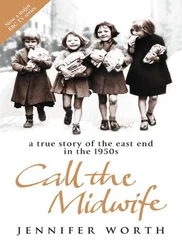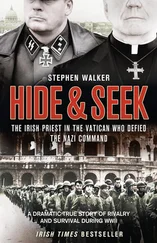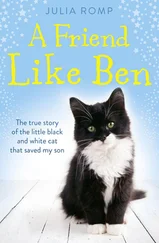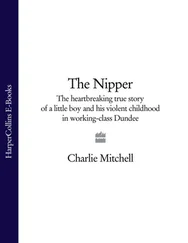Her extended family included gang members – too many of them. Her mother was determined her children would not go the way of so many of their cousins. She sacrificed to send them to a really good school, a Catholic school called Saint Sebastian, and they were the only kids in the district who were waiting at the bus stop at seven a.m. each morning.
Priscilla grew up surrounded by family, including her grandparents and uncles living across the street, but isolated from her peers. Her remote neighbourhood was surrounded by orange groves and mustard fields, the plants tall enough for Priscilla to hide in. ‘I liked being alone,’ she says. ‘But in a way that stopped me from having friends.’
She grew up tough. That’s what happens when you’re surrounded by gangs – and she’d hung around her share of gang types. When she was sixteen, a group of girl hoodlums jumped her and beat her up, leaving red gashes down her arms. ‘They thought I was a weak little thing from a Catholic school, but I held my own. I’ve always felt pretty strong. It’s probably the reason I gravitated to correctional work after I left school.’
And Priscilla grew up feeling different. When her grandmother descended into dementia, her mother took care of her, which meant Priscilla and her brother had to help run their mum’s restaurant. Priscilla was only thirteen.
‘I was a really good softball player, but I couldn’t participate in sports because I had to work every afternoon and every weekend. I remember a conversation with classmates when we were talking about what we wanted for Christmas. I said I needed a coat. One of the girls said scornfully,’ Why don’t you ask for something you want? Why ask for something you need?’ But I was lucky to get what I needed. They couldn’t understand my world, and I couldn’t understand theirs. I thought it’d be the same thing with the Jewelia women.
‘I don’t think anyone who grows up like I did ever outgrows the feeling that they’re not good enough. I don’t think others thought that about me, but I thought it. Intellectually, I knew that friendship wasn’t about the way you grew up or the schools you attended, but I didn’t feel it. That thinking kept me from reaching out.
‘I assumed these women would be upper-crust. I didn’t think I was in their league. I felt as though I was back in school. Just thinking about going to a meeting was nerve-racking. Would I fit in? Would I be accepted? What if they didn’t like me?’
Priscilla realised she was still staring at the e-mail. She wasn’t an e-mail person, hated coming into the office every day to face eighty new messages. All her replies were short. ‘I’ll be there,’ she typed. ‘Looking forward to it.’
She wasn’t looking forward to it. She was just being polite. Being with a crowd of people made her physically uncomfortable. Sometimes she wondered if she had a phobia. Growing up, she always sat at the back of the classroom, anything not to call attention to herself. The extent of her contact with school friends, the few she had, was ten minutes a day.
For most of her life Priscilla had only one close friend – and she lived in Houston, Texas. And ‘close’ was a relative term, given that sometimes Priscilla went a year without talking to her. Having one friend 2,500 kilometres away seemed like enough, however, when you worked all the time. And when hadn’t Priscilla worked all the time? Ever since she’d greeted, served and washed dishes in her mum’s diner, she’d worked. She’d borne three children by the time she was twenty-seven and never stopped working.
Even her sister’s illness and death hadn’t changed that work-work-work pattern. But it caused her to withdraw even more deeply into herself than before.
Priscilla decided that if she was going to this meeting, she should try to make a good impression. On the day of the meeting, she looked into her wardrobe. Everything in there was black, the best colour for slimming the extra weight she felt she was carrying. Priscilla had one of those curvaceous and lush bodies that lots of men desire. Despite knowing that real women have curves, Priscilla viewed her body type critically, the result of years of conditioning.
She chose her best suit and designer high heels. Her jewellery she didn’t worry about: on her right hand, a Hearts on Fire diamond ring; on her wrist, a Philip Stein oval dual-time-zone watch, one of Oprah Winfrey’s Christmas selections two years in a row, the one the talk-show host herself wore. Priscilla had been attracted to the watch because it contained two copper chips, which were supposed to help induce sleep. Since she’d been waking at two every morning and staring at the ceiling, she needed all the help she could get. Priscilla sported the two-thousand-dollar version with a diamond border. One of the perks of owning a jewellery shop was that she could borrow whatever she wanted. The downside was that nothing was really hers. If a customer admired her jewellery and wanted to buy it, she took it off that day and never wore it again. It was better to make the money, so she tried not to get attached.
She found a place to park outside the venue for the meeting – Ventura’s historic Pierpont Inn, turned off the engine and braced herself. Her nerves were frayed. The jittery feeling reminded her of the time back in 1994 when she’d decided to return to college and get a degree. For twenty years she’d been raising three kids, juggling temp jobs, part-time jobs, all varieties of jobs from locking up criminals in the county jail to selling cosmetics. She’d driven to the admissions office, parked the car, turned off the engine, panicked, restarted the engine, driven around the campus, returned to the parking lot, turned off the engine, panicked, restarted the engine, and driven around the campus. She circled eight times – yes, she’d counted – before she’d finally mustered the courage to go inside to talk to the admissions counsellor. Thank goodness she was past that now. No need to circle the grounds eight times today.
By the time Priscilla finished her ruminations and walked into the room, the single chair at the long, rectangular table loudly indicated she was the last to arrive. This wasn’t anything new. She was always late to social gatherings. Still, she castigated herself; being late doesn’t make for a good first impression.
Tiny gold lights interspersed in pine greenery gave the elegant, private room at the inn a festive atmosphere. Holly and poinsettias on the mantelpiece brightened the dark, panelled walls. But Priscilla didn’t notice the room. She saw only the women all laughing and talking at once. She saw exuberance, camaraderie – the e-mail chatter come alive.
In less than a minute she saw what was missing from her life.
‘I’m sorry I’m late,’ said Priscilla, rushing the words. ‘I had work to take care of.’
Before the words sputtered from her mouth, Jonell had jumped out of her seat with a huge smile. She walked quickly over to the newcomer, wrapped an arm around her, and introduced her to the others. Everyone broke into huge smiles, each woman thinking, ‘So this is the woman whose generous husband made it all possible.’
Priscilla sat down. She knew it wasn’t polite but she couldn’t help staring at the woman across from her. It was Maggie Hood, her straight blonde hair with long wispy layers framing her green eyes, a leopard-print jersey wrapped snugly and suggestively around her muscular body. Priscilla didn’t know that women in their fifties could look that good.
Had they had an in-depth conversation, Priscilla would have discovered that the surfaces of their lives were as different as their bodies. Maggie had had three husbands and many boyfriends over the years. But deep down Priscilla had more in common with Maggie than she could ever have imagined just looking at her. Two thousand miles from Ventura, in the inner city of Chicago, Maggie had also grown up in a tough neighbourhood.
Читать дальше
